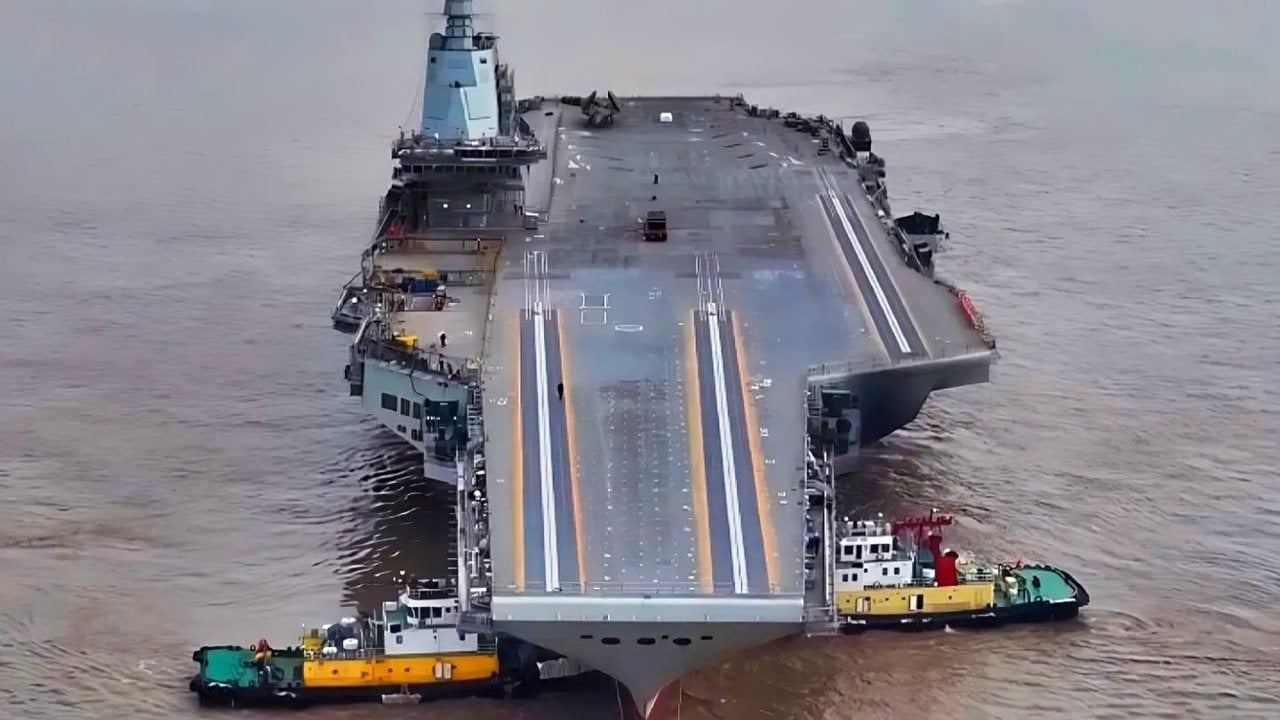China's Aircraft Carrier Just Conducted 240 Fighter Jet Sorties as a Warning

Summary and Key Points: The People's Liberation Army Navy (PLAN) conducted extensive far-seas drills in the Philippine Sea with the Type 002 aircraft carrier Shandong. Over seven days, Shandong launched approximately 240 fighter jet sorties and 140 helicopter sorties.

-The flotilla, including destroyers and a replenishment ship, was closely monitored by Japan's Maritime Self-Defense Force. The deployment occurs as the U.S. Navy faces a temporary gap in the Indo-Pacific region.
-Despite Chinese efforts to enhance carrier operations, experts believe PLAN requires decades to achieve U.S. Navy's operational proficiency. The PLAN is accelerating its carrier operations to gain experience rapidly.
China Holding Naval Drills – Launching Nearly 250 Aircraft Carrier-based Sorties
The People's Liberation Army Navy (PLAN) has been conducting far-seas drills in the Philippine Sea, and on Wednesday, the conventionally powered aircraft carrier Type 002 Shangong engaged in intensive aircraft operations. The Chinese carrier – the first to be domestically built for the PLAN – was joined by two Type 055 large destroyers, two Type 052D destroyers, a Type 054A frigate, and a Type 901 comprehensive replenishment ship. The PLAN flotilla had transited waters south of Japan's southwestern islands earlier this month, passing the self-ruling Taiwan last week.
According to a report from the Chinese state media outlet The Global Times, in just the past seven days, Shandong "hosted about 240 fighter jet sorties and about 140 helicopter sorties." The fixed-wing aircraft were stated to be the J-15 "Flying Shark," a carrier-based multirole fighter developed by China's Shenyang Aircraft Corporation, and based on the Russian Su-33 (NATO reporting name "Flanker-D."
Though the Type 002 Shandong employs a ski jump ramp to launch its aircraft, the J-15 can still carry an array of weapons, including air-to-air missiles, air-to-surface missiles, and precision-guided munitions.
As previously reported by The National Interest, the J-15 Flying Shark can carry up to 12,000 kg (25,400 pounds) of ordnance on its external stores, including short-range PL-8 and PL-12 air-to-air missiles, YJ-83K anti-ship missiles, and various bombs and rockets. The multirole fighter is powered by two Shenyang WS-10 turbofan engines, each providing a thrust of 12,800 kgf – providing the Flying Shark with a top speed of Mach 2.4 and a range of 3,500 km (2,175 miles) with external fuel tanks.
A Chinese CSG on the Move as U.S. Navy Faces Indo-Pacific Gap
The PLAN carrier strike group (CSG) has been closely monitored by Japan's Joint Staff Office (JSO), while the Japan Maritime Self-Defense Force (JMSDF) destroyers JS Akebono (DD-108) and JS Kirishima (DDG-174), and destroyer escort JS Jintsu (DE-230) have been shadowing the Chinese vessel – reportedly on a rotational basis.
The deployment of the Type 002 Shandong comes as the U.S. Navy has been left with a gap in the Indo-Pacific. The USS Theodore Roosevelt (CVN-71) has been deployed to the Red Sea, replacing the USS Dwight D. Eisenhower (CVN-69) after the Nimitz-class nuclear-powered supercarrier saw her deployment to the region extended twice.
The U.S. Navy's USS Ronald Reagan (CVN-76) also recently ended her forward deployment in Japan, while CVN-76's, USS George Washington (CVN-73) is now preparing to head to the region after returning to service last spring following her four-year Refueling and Complex Overhaul (RCOH).
China's Aircraft Carrier Efforts Continue
The U.S. Navy hasn't commented on the deployment of the Type 002 Shandong, but a senior Philippine Navy official stated on Monday that he believed Beijing "needs decades" to refine its aircraft carrier operations, according to a report from the South China Morning Post.

"I told our compatriots that the People's Liberation Army (PLA) is still inexperienced. Although they are more advanced than us, it will be a long time before they reach the operational level of their aircraft carriers," said Rear Admiral Roy Vincent Trinidad.
While that is almost certainly true that the PLAN needs more experience with carriers, having only operated the flattops for little more than a decade, it would seem it is going all out to make up for lost time.
Author Experience and Expertise: Peter Suciu
Peter Suciu is a Michigan-based writer. He has contributed to more than four dozen magazines, newspapers, and websites with over 3,200 published pieces over a twenty-year career in journalism. He regularly writes about military hardware, firearms history, cybersecurity, politics, and international affairs. Peter is also a Contributing Writer for Forbes and Clearance Jobs. You can follow him on Twitter: @PeterSuciu. You can email the author: Editor@nationalinterest.org.
All images are Creative Commons and/or Shutterstock.
